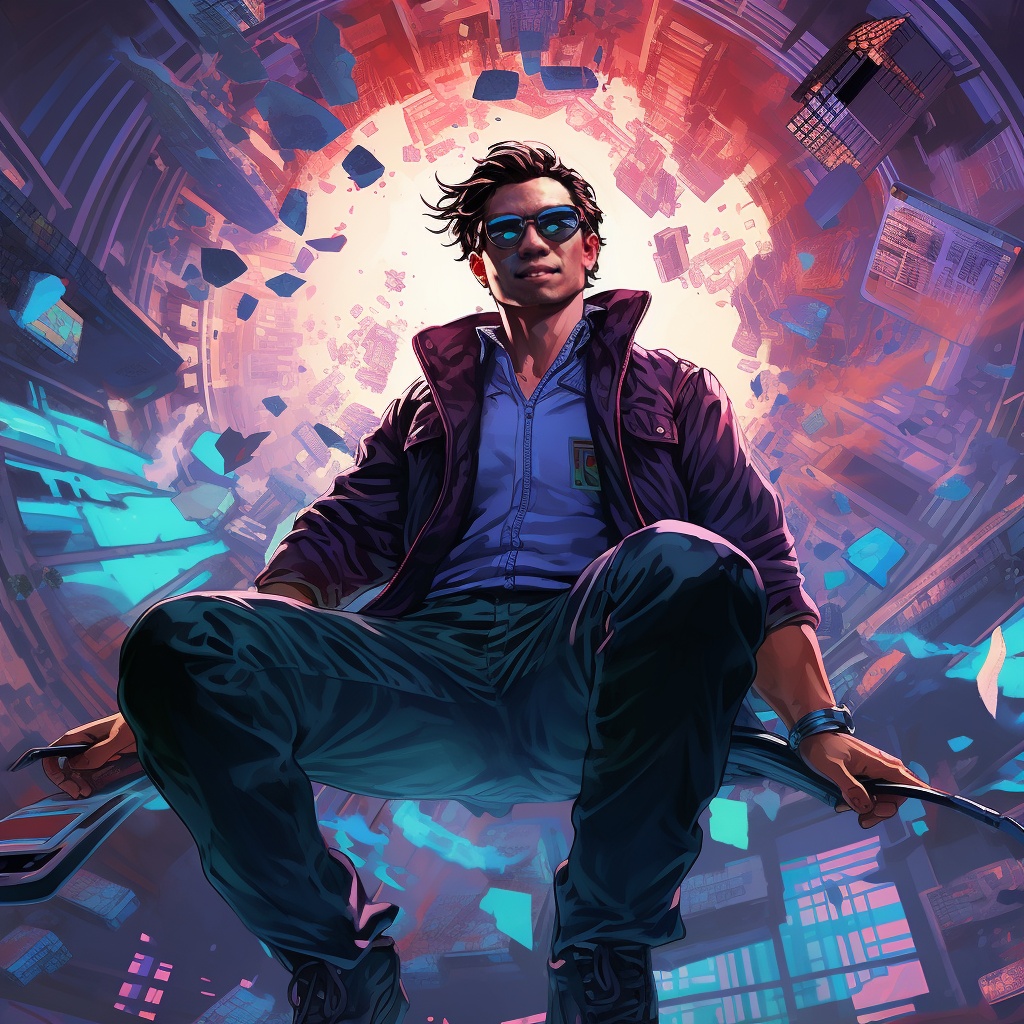Blender Slash Mesh creation
 Peter Vo
Peter Vo
References
https://youtu.be/FdSjzioLlb0?si=-QQpozJPueWSsh-N
https://youtu.be/QyI8ZS-G9nw?si=PZi68Mf3WPOrX9z1
https://youtu.be/MkLRaIZauAA?si=5Hqijjk6lZNPkNMZ
Steps
You would want the blade mesh to point toward the Positive X axis, like this:

First in the new default Blender, remove the default Camera, Cube, and Light.
Shift + A and add the new Mesh > Torus. Set the Torus property to be:
Minor Segments: 4
Minor Radius: 0.5m

Now scale it in the Z-Axis with scale value 0.1:

Turn on the X-Ray mode (Shift + Z), and view from top down (Numpad 7). Access Edit Mode (Tab):

Select all vertices of the bottom left (including the vertices on -X and -Y axis), then Delete the Faces:

Back to Object Mode (Tab), then rotate it around Z-Axis -45 degrees:

Back to Edit Mode (Tab), go to Front or Side View (Numpad 1 or 3), select all of the bottom half vertices, including those in the middle. If done correctly, only vertices on the hull of top half should not be selected:


Press Delete, and select Faces. We now have the bottom half removed:

Now in Object Mode, select the mesh, then click on the Modifiers section to add Mirror Modifier.
Make the Modifier Z Axis, and Clipping is checked:

We now have the bottom half mirror the top half:

Now move to UV Editing tab:

In Edit Mode, press A to select All. The UV should appear in UV view. Most of the time, the UV should be in place of a rectangle like this:

However, if you find your UV not in the rectangle like mine, manipulate your UV like in this video (https://youtu.be/FdSjzioLlb0?si=JJX0IXYvSj34cVzL&t=420):
Select all Faces in Edit Mode, press U and select Lightmap Pack
Then select one of the Faces (in Face Select mode is set), press A to select all, press U, and select Follow Active Quad. Length Mode should be Even.
The resulting UV may look like square faces whose positions are same as mine (though with different sizes)
Now, check the corresponded position of inner faces and outer faces. We would want the inner faces at the bottom of the UV map, and the outer faces at the top of the UV map. If your current UV is the opposite (like mine), rotate the UV 180 degrees.


Now, scale the UV to fit the UV map. Mine (and likely yours) is exactly 75% of the X, and 50% of the Y. Therefore, the scale for Y is 2, and the scale for X is 1.333:

Now, select UV > Constraint to Image Bound:

Then select the UV, press G (move). The UV will be snapped into the Image Bound:

This should be ready for exporting for game engines (most commonly Wavefront OBJ). There is some advice to Apply Transform, Scale, and Rotation before exporting, though I have not seen the difference for it. So, the Apply is optional and up to you.
Subscribe to my newsletter
Read articles from Peter Vo directly inside your inbox. Subscribe to the newsletter, and don't miss out.
Written by

Peter Vo
Peter Vo
A (kinda) carefree blogger who likes to blog anything he finds interesting...